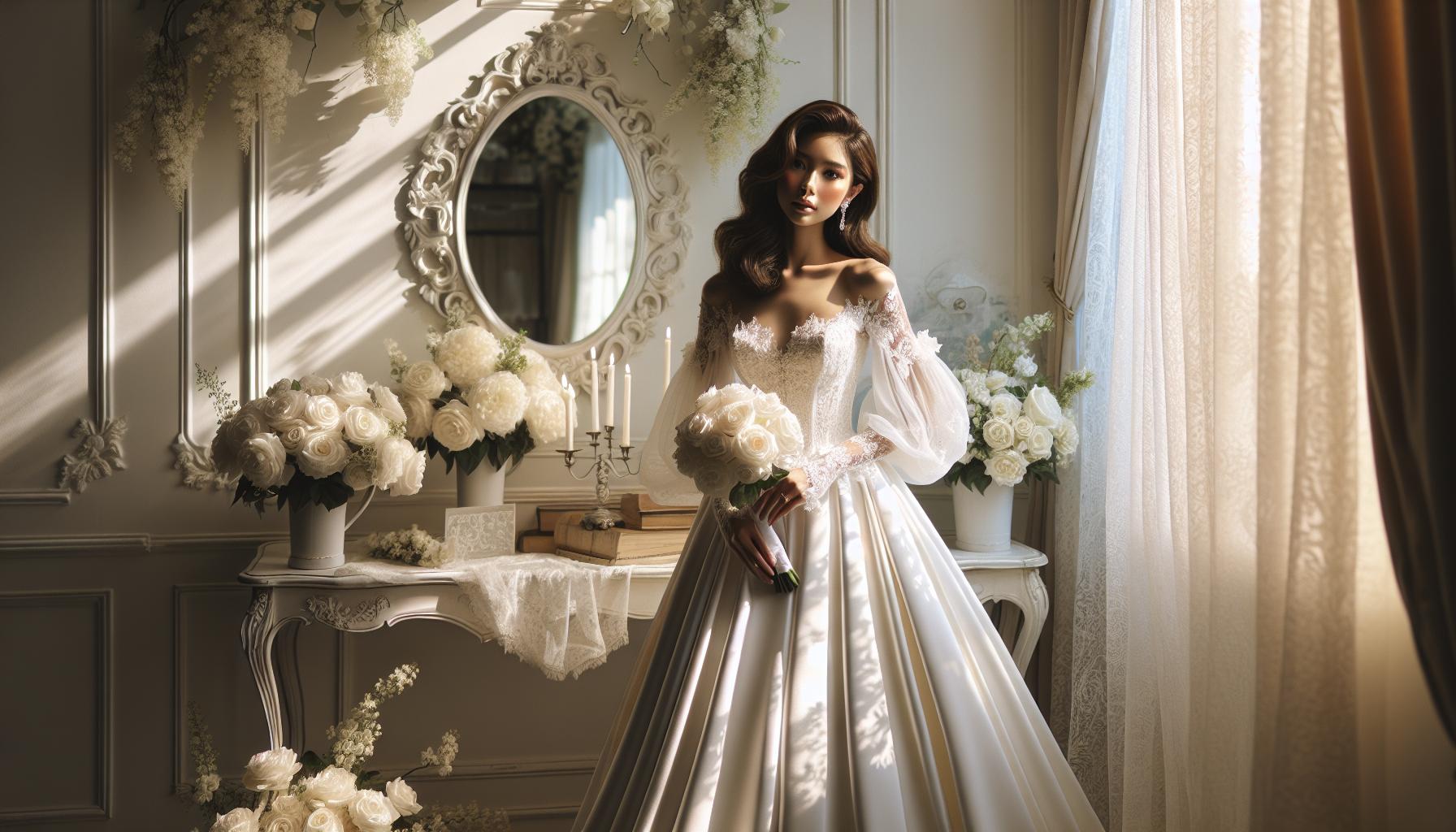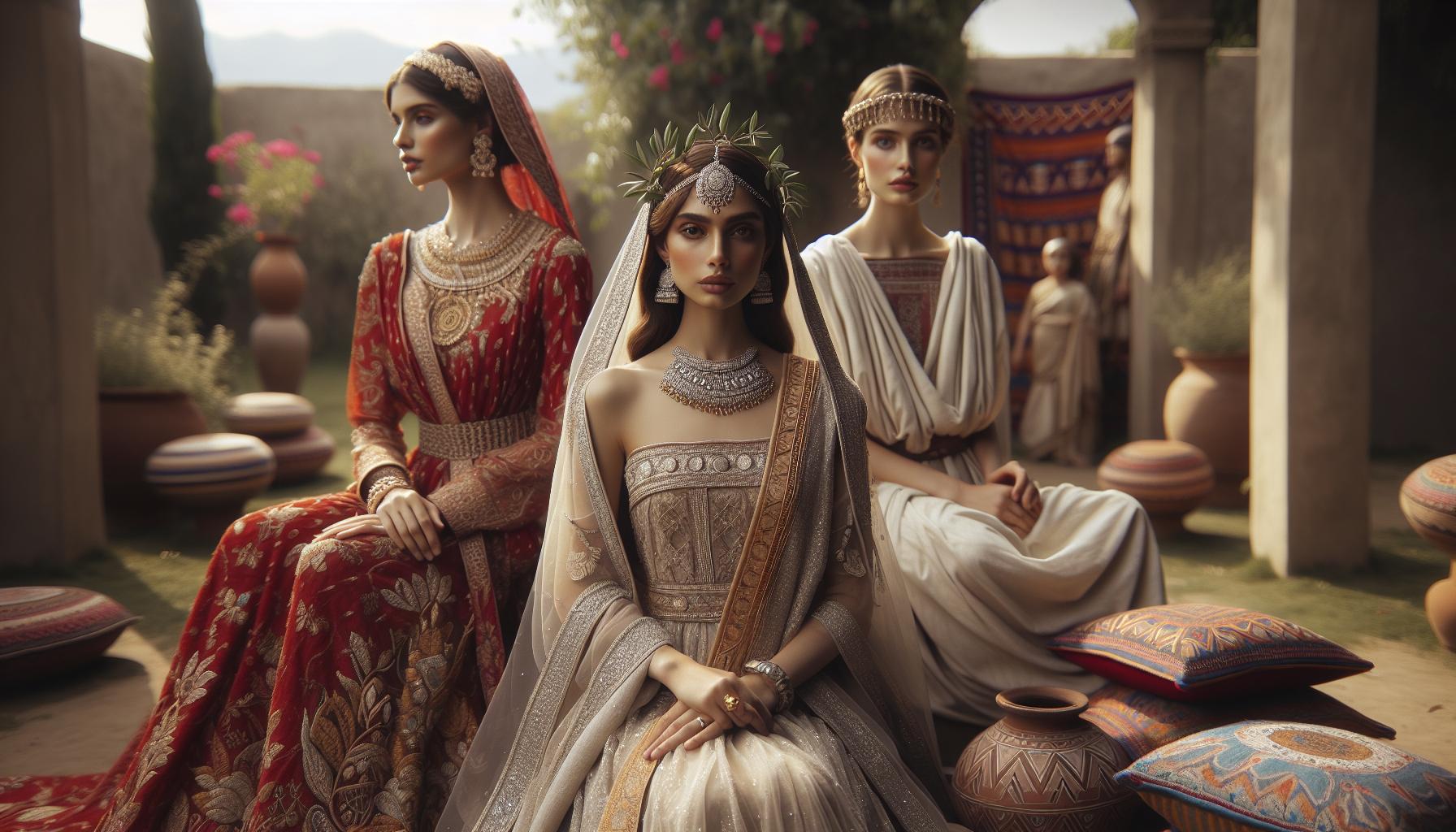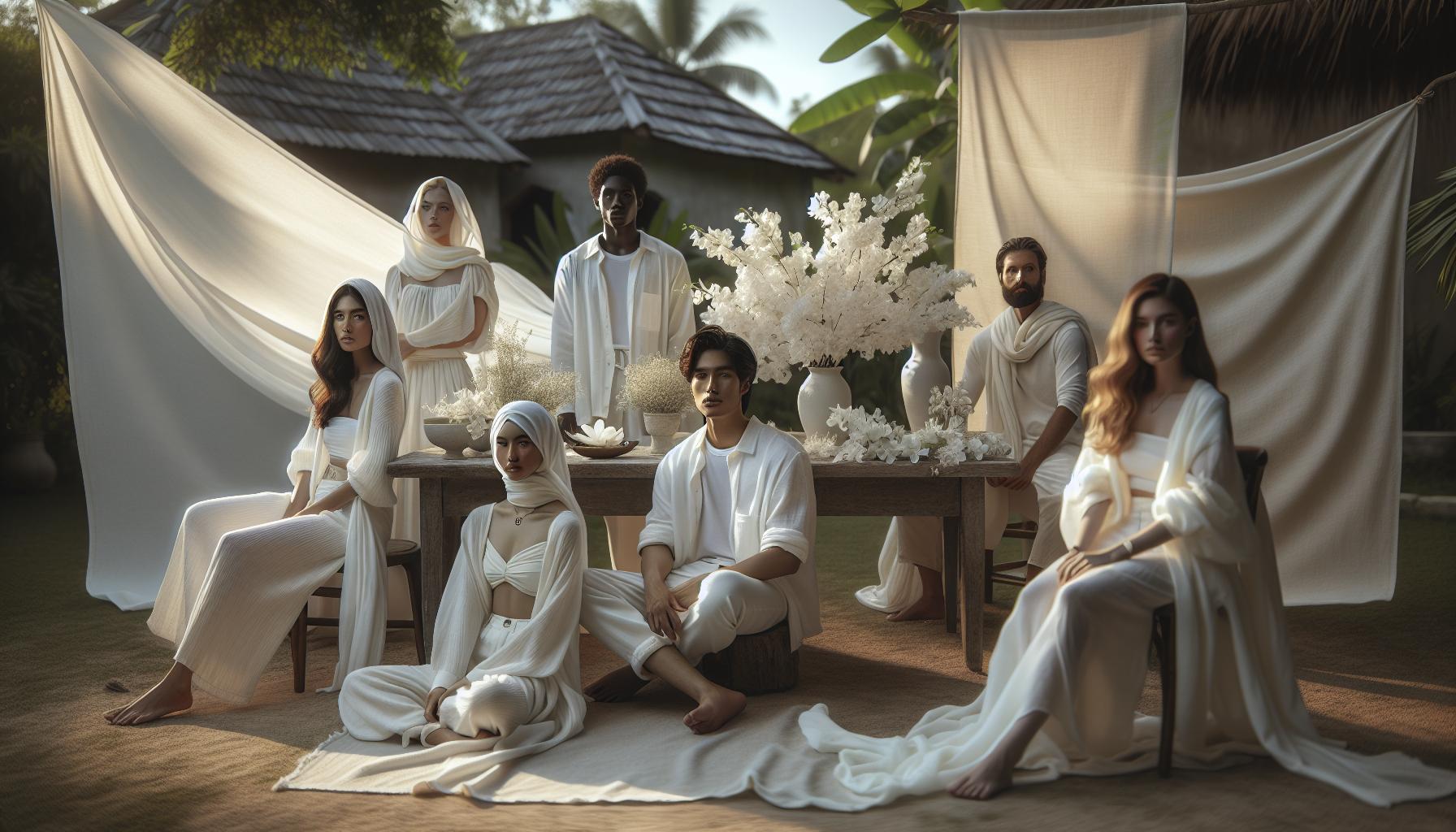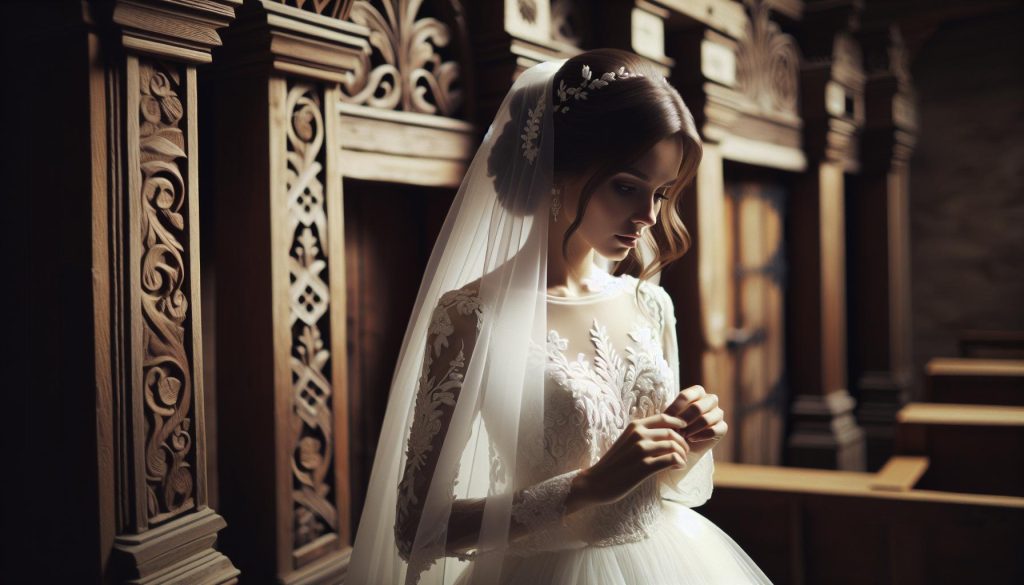The tradition of wearing white wedding dresses is deeply rooted in history and symbolizes purity, innocence, and new beginnings. Originating in the 19th century, this custom has become a significant choice for many brides, shaping their visions of the perfect wedding day. As couples plan their nuptials, understanding the context behind this enduring tradition can add an enriching layer to their celebration. It’s not just a color choice; it reflects an evolution of customs and personal expressions of love. Whether you’re drawn to the classic elegance of white or considering a more unique hue, exploring the reasons behind this tradition will inspire your decision and make your wedding more meaningful. Join us as we dive into the fascinating history and cultural significance behind the iconic white wedding dress.
The Historical Significance of the Color White in Weddings
The color white has held historical significance in wedding attire, often symbolizing ideals that resonate deeply within the context of marriage. Traditionally, white represents purity and innocence, concepts that have been embraced by brides for centuries. This connection can be traced back to ancient cultures where color symbolism played a vital role in ceremonies and rituals. In many societies, white was chosen for its association with light, truth, and new beginnings, making it a natural selection for the start of a married life.
The modern association of white wedding dresses is heavily influenced by Queen Victoria’s decision to wear a white gown when she married Prince Albert in 1840. This moment not only popularized white as the color of choice for brides but also set a precedent that continues to shape contemporary wedding traditions. Prior to this, brides often wore richly colored dresses that could be reused for other formal occasions. Queen Victoria’s choice introduced an ideal of singularity and specialization that solidified white as emblematic of the wedding ceremony itself.
Beyond its initial symbolism, the color white has evolved to encompass broader meanings within the context of love and commitment. It now represents not just innocence but also a canvas for personal expression in wedding attire. As brides embrace their individuality, white dresses can feature a range of styles, embellishments, and shades, each contributing unique narratives. The timeless allure of white remains a staple in bridal couture, urging couples to honor their traditions while also celebrating their unique love stories.
With the color white retaining its powerful symbolism, it invites couples to reflect upon their journey together as they navigate the exciting process of wedding planning. Whether opting for a classic or modern gown, the choice offers an opportunity to embody personal values, beliefs, and dreams on a day filled with love and bliss.
Early Influences: Bridal Attire in Ancient Cultures
The origins of bridal attire in ancient cultures reveal fascinating insights into the symbolism and significance attached to wedding garments long before the color white became synonymous with weddings. Many cultures around the world utilized specific colors and styles to convey messages about status, fertility, and the beginning of a new life. In ancient Rome, brides typically wore a tunic known as a tunica recta, which was belted under the breast and symbolized a new beginning. The use of reddish hues was also common, intertwining with fertility and prosperity.
Similarly, in ancient Egypt, brides adorned themselves in garments made from fine linen, a material associated with purity and high status. The color of choice often varied-some brides wore yellow for joy and celebration, while others donned green to signify fertility. This early use of color and symbolism illustrates how bridal attire was not merely a reflection of aesthetic preferences but deeply rooted in cultural identity and societal values.
As you explore bridal traditions, consider the diverse influences that shape modern wedding attire. Many couples today might opt to incorporate elements from these rich histories, whether through specific colors or styles that resonate with their personal beliefs and heritage. A vibrant blue, for instance, might evoke the ancient tradition of something borrowed, something blue, reinforcing the idea of community support and marital stability, or a touch of gold as reminiscent of ancient Egyptian wedding customs, showcasing wealth and prosperity.
In navigating your own bridal style, remember that every choice-from color to fabric-can be a joyous expression of your unique story. Allow these historical influences to guide you as you blend tradition with modern sensibilities, ensuring that your bridal attire not only reflects your personality but also honors the extensive legacy of love and commitment that has inspired countless couples before you.
The Impact of Queen Victoria on Wedding Dress Trends
When Queen Victoria married Prince Albert in 1840, her choice of a white wedding dress shocked society but inevitably set a monumental trend in bridal fashion that reverberates through to today. For her nuptials, she chose a gown made of white silk satin, an unconventional choice at the time, as brides typically wore dresses made of rich, colorful fabrics or even their best dresses, regardless of color. Victoria’s stunning gown featured exquisite Honiton lace and symbolized a departure from the norm, showcasing her desire to embody purity and taste. This decision ushered in an era where white became synonymous with weddings, transforming how brides approached their attire.
Victoria’s influence extended beyond color; she epitomized the romantic ideal of bridal beauty and femininity. Her iconic dress inspired brides across England and the world to adopt the white wedding dress, leading to a rapidly growing market for wedding attire. As more brides emulated this look, the lace and embellishments from Victoria’s gown became sought after, paving the way for intricate designs that are still beloved in contemporary bridal fashion. The choice of fabric and embellishments shifted as well, as higher-quality materials and tailored designs became accessible, changing the landscape of wedding attire forever.
In response to Queen Victoria’s monumental influence, society began associating the color white with purity and innocence, values heavily emphasized during the Victorian era. This symbolism was integral to the narrative of marriage, as brides donned white gowns to signify their virtue and commitment. As the years passed, the white wedding dress evolved, incorporating diverse styles, cuts, and fabrics that reflect individual tastes, while still adhering to the tradition initiated by this iconic royal wedding.
As you plan your own wedding, consider how this historical legacy may influence your choice of attire. Whether you opt for a classic white gown reminiscent of Queen Victoria’s or choose a unique hue that symbolizes your personal journey, remember that your wedding dress is an expression of your identity and love story. Embrace the history while seamlessly merging it with your modern vision for a day that celebrates your unique union, just as countless brides have done in the wake of this transformative moment in wedding history.
Symbolism of White: Purity, Innocence, and Beyond
While the visual beauty of a wedding may often steal the spotlight, the color of a bride’s dress carries profound historical and cultural significance. The choice of white for wedding dresses is deeply rooted in the symbolism of purity and innocence, concepts that resonate on multiple levels. Traditionally, a white dress represents the bride’s purity, a value that was especially emphasized during the Victorian era. The white hue signifies a new beginning, reflecting societal ideals that align with marriage as a sacred union.
As the fashion trend initiated by Queen Victoria took hold, white soon became the universally accepted color for bridal attire, intertwining with notions of virtue and naivety. It is essential to recognize that the color white goes beyond mere aesthetics; it embodies the hopes and dreams that a couple shares on their wedding day. The pristine shade evokes feelings of freshness and newness as couples embark on their journey together.
However, the symbolism of white is not without its layers. Today, many brides choose to embrace the significance of white while adapting its meaning to reflect their personal identities and love stories. Some may opt for ivory, cream, or even off-white shades that still capture the essence of purity while allowing for a unique expression of style. Incorporating personal touches, such as heirloom lace or custom designs, helps bridge the historical significance of white with modern individuality.
Ultimately, the choice of color should resonate with the couple’s vision and values. Whether sticking to tradition with a classic white gown or selecting a more colorful ensemble reflecting personal heritage or uniqueness, it is the emotional connection to the attire that truly makes it special. Celebrating love in all its forms is what makes a wedding truly unforgettable. As you choose your wedding dress, consider what the color means to you and how it reflects your commitment, personality, and the unique journey you are embarking on together.
Global Perspectives: Wedding Dress Colors Around the World
Throughout history, the color of a wedding dress has varied significantly around the globe, reflecting deep-rooted cultural beliefs and regional practices. While white became synonymous with bridal fashion in Western cultures following the influence of Queen Victoria, many parts of the world embrace a diverse palette that symbolizes a range of values and traditions. Understanding these perspectives not only enriches the wedding planning experience but also allows couples to make choices that honor both their heritage and personal love stories.
In many Asian cultures, particularly in China, red takes precedence as the color of choice for weddings. It is believed to symbolize good fortune, happiness, and prosperity. Chinese brides typically wear a vibrant red qipao or cheongsam for the ceremony. The color is also reflected in the décor and invitations, embodying the joyous spirit of the occasion. In contrast, Korean weddings often involve the bride donning a hanbok, which can be adorned in various colors. The modern interpretation might include a white dress for certain ceremonies, but the traditional attire is celebrated for its bright and festive colors.
In Hindu marriages, brides often wear rich, elaborately designed saris or lehengas in shades of red, orange, or pink, as these colors are viewed as auspicious. Each hue holds specific significance and is chosen based on factors such as the season, time of day, and even the couple’s personal tastes. These garments might be intricately embroidered with gold or silver thread, enhancing their beauty and cultural importance.
In more recent years, Western brides have increasingly embraced colored wedding dresses, stepping away from the classic white gown to express individuality. Shades like blush, champagne, and even bolder colors like navy or burgundy are becoming popular, allowing brides to showcase their unique personalities on this momentous day.
As you contemplate the color of your wedding dress, consider these global perspectives that speak to a beautiful blend of tradition and personal identity. Whether you embrace the classic white gown or opt for a colorful alternative, the key is to choose what resonates with your heart, reflects your heritage, and celebrates your love story. This remarkable journey symbolizes the union of two individuals, and the choices you make-whether traditional or modern-can enhance the richness of your wedding day.
Modern Trends: How Wedding Dress Fashion Has Evolved
In recent years, the world of bridal fashion has experienced a significant transformation, embracing diversity and personal expression like never before. This shift reflects broader societal changes, including a growing appreciation for individuality, sustainability, and inclusivity in wedding planning. As brides seek to make their special day uniquely theirs, the traditional white wedding dress is no longer the only option, paving the way for a myriad of choices that incorporate various cultural influences and modern sensibilities.
A surge in colored wedding dresses has been a hallmark of this evolution. Brides are increasingly opting for hues such as soft blush, sunny yellows, rich burgundy, and even bold navy, allowing them to showcase their personal style and align their attire more closely with their wedding theme. This trend not only enables more personalization but also encourages a break from convention, inviting brides to choose colors that hold personal significance or reflect their unique personalities. Additionally, the rise of non-traditional silhouettes and diverse design elements-from bohemian lace to modern sleek lines-has allowed brides to further explore their creativity.
Moreover, the push for sustainability is influencing wedding dress choices. Many brides are now prioritizing eco-friendly options, seeking dresses made from sustainable materials or choosing vintage gowns that reduce waste. This conscientious approach resonates with current global trends towards responsible consumption and ethical fashion. Some are even embracing rental services that provide beautiful dresses without the commitment of a permanent purchase, aligning with a lifestyle choice that values sustainability.
The social media landscape, particularly platforms like Instagram and TikTok, has also revolutionized how brides envision their wedding attire. Influencers and bridal accounts inspire countless individuals with innovative ideas for dresses, accessories, and styling tips, creating a space where couples can find guidance that resonates with their aesthetics. With community feedback and trend sharing becoming more accessible, brides are encouraged to step outside traditional norms and explore a broader spectrum of options for their wedding day attire.
As you explore ideas for your wedding dress, keep in mind that the ultimate choice should reflect your individuality and values, whether you lean towards a classic white gown or something that speaks more to your heritage and personal taste. The journey of selecting a wedding dress can be a canvas for self-expression, creating a moment that symbolizes not only the exaltation of love but also the beauty of embracing who you truly are.
Cultural Variations: Unique Wedding Dress Customs
In a world rich with diverse cultures and traditions, the choices brides make for their wedding attire often reveal their values, beliefs, and heritage. While the white wedding dress has become synonymous with Western weddings, many cultures around the globe celebrate nuptials in vibrant colors and unique styles that reflect their distinct histories and customs.
In India, for instance, brides traditionally wear red, symbolizing prosperity, fertility, and marital bliss. The attire is often an elaborately designed saree or lehenga adorned with intricate embroidery and jewels, transforming the bride into a stunning centerpiece of the celebration. In contrast, Chinese brides may don a red qipao or traditional gown, embodying happiness and good fortune. The color red dominates their wedding ceremonies, as it is believed to ward off evil spirits and bring joy.
Moving to Africa, brides often wear brightly colored garments, such as the kanga in East Africa or the ankara fabric, known for its bold prints and vibrant hues. These dresses are not only stylish but are also deeply rooted in various tribal customs, showcasing the bride’s cultural identity. Similarly, in Japan, the shiro-muku, a pure white kimono, is worn during formal ceremonies, representing purity and is complemented by colorful obi sashes and accessories that convey wealth and status.
Bringing this rich tapestry of global attire into focus, it is crucial for modern couples to reflect on their own backgrounds when selecting a wedding dress. Drawing inspiration from familial customs can create a meaningful connection to heritage, serving both as a tribute and a celebration. Couples may opt for hybrid designs-taking elements from different traditions or incorporating unique colors and accessories that resonate with their personal stories.
When planning your attire, consider these practical steps:
- Research: Delve into your family history and cultural practices to find styles that resonate with you.
- Consult: Speak with older relatives to gather insights and stories about traditional attire.
- Personalize: Infuse your wedding dress with personal touches, such as heirloom jewelry or a specific color significant to your culture.
- Balance: Create a fusion that respects tradition while embracing modern aesthetics-making your wedding day truly yours.
Infusing cultural elements into your wedding attire not only honors your roots but also enhances the celebration, creating a tapestry of love and diversity that reflects the couple’s journey together. Embrace the opportunity to express who you are through your wedding dress, weaving together tradition, family, and personal identity in a way that is beautifully unique to you.
Choosing the Right Shade of White for Your Wedding
Selecting the ideal shade of white for your wedding dress can transform your bridal look from ordinary to extraordinary. While traditional white remains a popular choice, not every bride fits neatly into that category. Subtle variations in hue can evoke different feelings and complement varying skin tones, ensuring that you shine in your moment of celebration.
When considering shades, think about the emotional tone you want to convey. Pure white often symbolizes a fresh start and innocence, while shades like ivory or cream can offer a warm and inviting aura. For instance, ivory, with its subtle warmth, tends to flatter a wider variety of skin tones and can give a softer, vintage vibe that pairs beautifully with gold or pastel accents. In contrast, a silvery white can lend a modern and chic touch, ideal for a contemporary, minimalist wedding.
It’s also essential to consider how your dress’s shade interacts with your wedding color palette. If your event leans towards bold colors, a classic ivory or off-white may balance well without competing with vibrant hues. A more elaborate venue or rich decor can wonderfully complement a deeper white, drawing attention to both your gown and the overall ambiance. Before making a final decision, collect fabric swatches from your dress designer and see how they look under different lighting conditions-daylight vs. candlelight can have a dramatic effect on white shades.
Taking time to experiment with different shades will not only enhance your bridal beauty but will also ensure that you feel a deep connection to your dress as you walk down the aisle. Consider bringing along trusted friends or family during fittings to gather feedback and explore combinations that resonate with your personal style. It’s an exciting step towards your big day, so embrace the journey and enjoy the process of finding your perfect white!
Tips for Selecting a Wedding Dress: From Design to Fit
Selecting the perfect wedding dress is one of the most enchanting experiences in the wedding planning journey. With the dress being such a significant symbol of love and commitment, taking time to thoughtfully consider design and fit can lead to a truly magical outcome. Begin by envisioning the style that resonates with you most-whether it’s a romantic ball gown, a sleek mermaid silhouette, or a vintage-inspired piece. Your personal aesthetic will serve as a guiding light in the overwhelming sea of options.
Understanding Your Body Type
Every bride deserves to feel comfortable and stunning on her big day. Start by understanding your body type, as different cuts and designs will flatter various shapes. For example, A-line dresses graciously skim over the hips, ideal for brides wanting a balance between comfort and elegance, while ball gowns can create the ultimate fairy-tale effect for those aiming for opulence. If you have a slender frame, consider a fitted design to accentuate curves, while curvier brides might opt for a structured bodice that provides support and highlights their figure.
Practical Considerations
Before you get swept away in dreamy fabrics and embellishments, it’s important to consider practical elements such as venue, season, and wedding theme. For outdoor summer weddings, light, breathable fabrics like chiffon or lace will keep you comfy and cool, while thicker materials like satin may be better suited for a winter wonderland ceremony. Additionally, ensure that the dress works well with your chosen venue; an intricate ball gown in a rustic barn setting may feel out of place, whereas a flowing gown would complement it beautifully.
Embrace the Fitting Process
When it comes to fittings, keep an open mind. While it’s essential to have a vision, remember that the dress you may not have initially considered could surprise you. Don’t hesitate to try on various designs, even those outside your comfort zone. Always prioritize fit over style-an expertly tailored gown will elevate your look beyond any fantasy. Bring along trusted friends or family members whose opinions you value, as their insights can be invaluable during this exciting process. Remember, the goal is not just to look beautiful but also to feel confident and authentic as you walk down the aisle.
By embracing the experience of choosing your wedding dress, you are weaving personal narratives into the history of this timeless tradition. Celebrate the journey with love and joy, knowing that you’re not just selecting an outfit, but a cherished symbol of your union.
Sustainable Options: Eco-Friendly Wedding Dresses
In an age where sustainability is increasingly vital, the choice of a wedding dress can embrace eco-friendly practices while still celebrating love and commitment. Eco-conscious couples have a wonderful opportunity to blend their values with their wedding attire, ensuring that their special day honors both their relationship and the planet. More than just a trend, sustainable wedding dresses represent a thoughtful approach to fashion that aligns with a growing desire for ethical consumerism.
One excellent way to choose eco-friendly options is through the selection of sustainable materials. Look for dresses made from organic cotton, hemp, bamboo, or recycled fabrics. These materials not only reduce environmental impact but often provide comfort and breathability as you move through the day’s festivities. Customizing a gown from a designer who specializes in sustainable fashion allows you to contribute to eco-conscious practices while obtaining a unique dress tailored to your style.
Many brides are also embracing the beauty of second-hand or vintage gowns. This option reduces waste by giving a second life to pre-loved dresses that have their own stories to tell. Scouring vintage shops, online marketplaces, or even borrowing a family heirloom can add a personal touch to your wedding attire while also minimizing the carbon footprint associated with new garment production. If you’re crafty, consider repurposing vintage fabrics to create a one-of-a-kind piece that reflects your identity and values.
Lastly, consider the afterlife of your wedding dress. Sustainable practices extend beyond the aisle, and many believers in eco-friendliness choose to donate their dress post-wedding or recycle the materials. Organizations focused on repurposing wedding dresses support various charities, allowing your choice to impact future couples in need. By choosing sustainability in your wedding attire, you not only celebrate your union but also contribute positively to global efforts for a healthier planet.
Accessorizing Your Wedding Dress: Styles and Suggestions
Every bride dreams of her wedding day, envisioning the perfect dress that symbolizes love and commitment. However, that perfect gown is often just the beginning. The right accessories can elevate a wedding dress, transforming it from beautiful to breathtaking. From delicate veils and sparkling jewelry to stunning shoes and elegant wraps, each piece plays a vital role in completing your bridal ensemble, showcasing your unique style while paying homage to the traditions that make weddings so special.
When considering accessories, it’s essential to maintain a harmonious balance with your gown. Start with your veil; whether it’s an intricate lace piece or a simple birdcage style, the veil can add an enchanting aspect to your look. For brides looking to make a statement, consider a floral crown or a headpiece adorned with crystals, echoing the white purity of your dress while adding a pop of personality. Pairing your veil or headpiece with delicate earrings-think pearl or diamond drops-can add elegance without overshadowing your dress.
Additionally, shoes are more than just a practical choice-they’re an opportunity to express your style. From classic white satin pumps to bold, colorful heels, choosing the right footwear can enhance your overall appearance. If you’re not accustomed to wearing heels, consider embellished flats or low-block heels for comfort. Don’t forget about your bouquet! The flowers you choose can complement your dress and accessories beautifully. Select blooms that reflect your color palette and incorporate elements like lace or beading to tie the whole look together.
Lastly, think about wraps or shawls that can be draped elegantly over your shoulders for a touch of warmth or modesty. Whether it’s a vintage fur stole, a delicate lace shawl, or a contemporary cape, this accessory not only elevates the overall aesthetic but also serves practical purposes if your wedding is in a cooler season. Each of these elements comes together to create a cohesive and stunning bridal look, allowing you to shine as you celebrate this monumental occasion. The right accessories will not only complete your outfit but also enhance the timeless beauty of your white wedding dress, ensuring you look and feel unforgettable on your special day.
Maintenance and Preservation of Your Wedding Dress
Every bride wants her wedding dress to remain as pristine as the day she wore it, but maintaining its beauty requires careful attention. After the final dance at the reception, your dress embarks on a new journey of preservation that is vital to ensuring it remains a cherished part of your wedding memories. The act of preserving your gown is not just about protecting fabric; it’s about honoring the significance of a garment that encapsulates one of the most important days of your life.
To begin, it’s crucial to clean your gown as soon as possible after the wedding. Stains from champagne, cake, or even sweat can set in quickly and become more challenging to remove later. Consider enlisting a professional cleaner who specializes in wedding attire. Their expertise ensures that delicate fabrics and embellishments are treated with the care they deserve. When searching for a cleaner, ask for recommendations or check reviews to find someone experienced in wedding dress preservation.
Once cleaned, the next step is proper preservation. Choose a preservation box designed specifically for wedding gowns, which includes acid-free tissue paper and a breathable garment bag. Avoid plastic, as it can trap moisture and lead to yellowing over time. Carefully fold your gown, ensuring that any beading or embroidery does not get crushed. Place layers of tissue paper between folds to maintain its shape. This thoughtful approach not only protects your dress from environmental damage but also allows you to revisit your memories in the future, when you might want to pass down the gown or simply admire it.
Finally, consider where to store your preserved dress. A cool, dark place is ideal, away from sunlight and humidity that could degrade the fabric over time. Revisit the preservation process every few years to ensure the gown remains in excellent condition. This might involve removing it from the box to check for any issues and to refold it carefully, preserving the integrity for years ahead.
In summary, with diligent care and proper techniques, the gown that once made you feel like a queen can be preserved and cherished, creating lasting memories for generations. Your wedding dress holds stories and significance far beyond its time at the altar, and by attending to its maintenance, you’re honoring not only your special day but the love it represents.
Q&A
Q: Why is white traditionally chosen for wedding dresses?
A: White is traditionally chosen for wedding dresses due to its associations with purity, innocence, and new beginnings. This symbolism became especially popular in the 19th century, largely influenced by Queen Victoria’s choice to wear white for her wedding to Prince Albert.
Q: When did brides start wearing white wedding dresses?
A: Brides started wearing white wedding dresses in the mid-19th century, particularly after Queen Victoria’s wedding in 1840. This marked a significant shift from earlier traditions where brides wore their best dresses, regardless of color.
Q: What does a white wedding dress symbolize?
A: A white wedding dress symbolizes purity and innocence, reflecting traditional values regarding marriage. Over time, it has also come to represent new beginnings and commitment, making it a popular choice for modern brides.
Q: Are there cultural reasons for choosing different wedding dress colors?
A: Yes, many cultures have unique traditions surrounding wedding dress colors. For example, red is a popular choice in Chinese weddings, symbolizing good fortune and happiness, while in Indian weddings, brides often wear colorful sarees or lehengas to signify joy and celebration.
Q: How have modern wedding dress styles evolved since the Victorian era?
A: Modern wedding dress styles have evolved significantly since the Victorian era, embracing diverse silhouettes, colors, and fabrics. Today’s brides often combine traditional and contemporary elements, choosing designs that reflect their personal style rather than sticking strictly to historical norms.
Q: Can I wear a non-white wedding dress?
A: Absolutely! Many modern brides opt for non-white wedding dresses, choosing colors that resonate with their personal style or cultural heritage. Shades like ivory, blush, or even bold colors are increasingly accepted, allowing for greater individual expression on their special day.
Q: What are the most popular alternative colors for wedding dresses today?
A: Popular alternative colors for wedding dresses include ivory, blush, champagne, and pastels, as well as bolder hues such as red, navy, or even black. These options allow brides to express their unique personalities and cultural backgrounds while still maintaining a bridal look.
Q: How can I preserve the symbolic meaning of a non-white wedding dress?
A: To preserve the symbolic meaning of a non-white wedding dress, consider incorporating traditional elements such as a family heirloom, meaningful accessories, or specific rituals during your ceremony. These choices can enhance the significance of your dress while honoring your personal style and story.
Key Takeaways
As we explore the enchanting history behind the tradition of the white wedding dress, it’s clear that this timeless symbol transcends mere color to embody love, purity, and new beginnings. By understanding the cultural significance and the evolution of this custom, you can make informed choices for your own special day. Don’t forget to check out our guides on choosing the perfect wedding venue and crafting heartfelt wedding invitations to complement your attire.
Ready to dive deeper into your wedding planning journey? Explore our extensive resources on ceremony traditions and vendor coordination-essential steps to ensure your celebration is truly unforgettable. Join our community and subscribe to our newsletter for tips, inspiration, and the latest trends. Embrace the joys and adventures of planning your wedding, knowing you’re equipped with the knowledge to make every moment magical! Share your thoughts or questions in the comments below; we love hearing from you!











